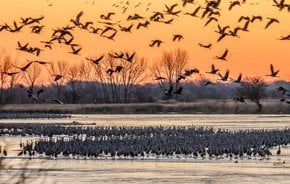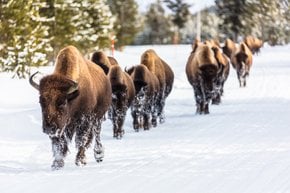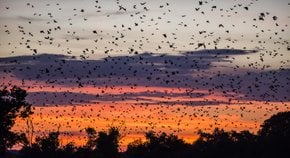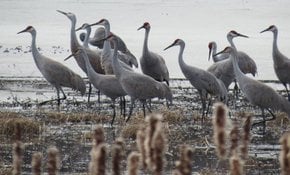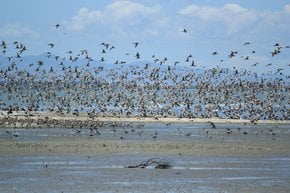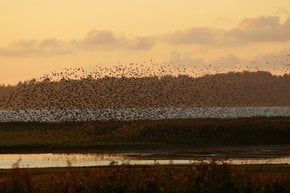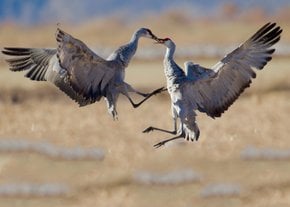Sandhill Crane Migration in Midwest 2026
Half a million feathered travellers take a break during their spring migration to feed and rest at the Platte River
Best time: mid-February–mid-April
Sandhill crane migration across North America is considered one of the world's largest wildlife movements that goes in range with well-known wildebeest and caribou migrations. It involves from 400,000 to 600,000 individuals, which is 80% of the world's sandhill crane population overall.
Hundreds of thousands of sandhill cranes enjoy the coolness of their nesting grounds in the Rocky Mountains of North America and Canada, as well as Alaska and even Siberia. But when summer is over, they set off on a far journey to the warmer southern lands of Texas, Arizona, New Mexico, and Chihuahua, Mexico. It isn't easy to trace them during their autumn migration, as they don't take any long breaks. However, on their way home in spring, they are not so hasty. The cranes stop by for 4 to 5 weeks in the wetlands of San Luis Valley in Colorado, and along the Platte River in Nebraska, the latter is known as the most famous sandhill cranes spotting place.
Platte River, Nebraska
To see the largest number of cranes, you can visit Kearney, Nebraska, which is often called the Sandhill Crane Capital of the World. Grand Island and North Platte are also known to have impressive crane congregations. Bird-watching tours are available at all locations.
The best way to experience the migration is to reserve a blind and get close to them on the sunrise. Rowe Sanctuary provides blinds to see cranes up close without disturbing them and take quality photos of the beautiful birds. The birds feed on cornfields and roost on shallow waters, so the best time of the day to observe the spectacle is either sunset or dawn. Kearney also hosts the annual Audubon Nebraska’s Crane Festival to mark the migration season every March. It's a great occasion to learn about cranes, their habits, habitats, and conservation efforts.
Best time to see sandhill cranes in Nebraska
Sandhill cranes arrive in 3 waves, starting from mid-February and the last group leaving in mid-April to continue their long journey to the north. The record numbers of sandhills is usually observed in late March.
Other locations to see sandhill cranes in the Midwest
While in Nebraska you can witness the largest congregation of cranes, smaller groups are often spotted at various wetlands and marshes throughout the Midwest in the spring and fall. Sandhill crane flocks appear in southern Michigan from October through November. Baker Sanctuary, with its Big Marsh Lake, has been known to host migrating cranes and serve as a breeding ground for a considerable sandhill crane population. The sandhill cranes are often spotted in northern Illinois. In the Jasper-Pulaski Fish & Wildlife Area in Indiana, up to 20,000 sandhill cranes show up during fall migration in November and December. During fall months, you can also see cranes in at Quivira National Wildlife Refuge, Cheyenne Bottoms Wildlife Area, or Kirwin National Wildlife Refuge in Kansas. Huron, South Dakota, is another good place to spot cranes in the spring and fall.
















